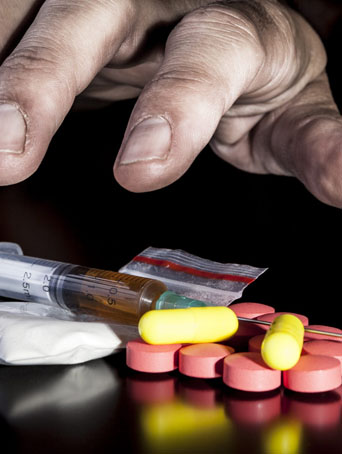The word “drug” is a broad term, but why would it be important to focus on identifying the type of drug abused? The type of drug is important to help determine the risk of addiction, associated symptoms, and health risks it poses. Three popular drug categories to discuss are opioids, stimulants and cannabinoids.
Opioids have become a significant contributor to the drug addiction problem today. These drugs are commonly known to alleviate pain, but also give the user a euphoric experience, leading to misuse. Common opioids introduced to many through prescription use are oxycodone, fentanyl, vicodin, codeine, morphine and hydrocodone. Short-term use under a doctor’s prescription is usually proven safe, but misusing these drugs can lead to a difficult battle of addiction and, unfortunately, numerous cases of overdose. With 130 million Americans dying of overdose daily, many efforts are being discussed in mainstream media to tackle this issue.
Heroin, an illegal drug identified as an opioid, has a quick response allowing immediate feelings of euphoria. This drug is extremely addictive and can quickly overtake a user’s daily life. The withdrawal symptoms are severe. Long-term use of opioids, whether illegal or by prescription, has caused Americans to be dependent on this type of drug. Addiction, overdose, and the loss of loved ones are often the result of long-term use of this powerful drug.
Stimulants another category of drugs seen in America today, are also called “uppers.” After taking, chemicals in the brain are increased and the user feels very alert. Illegal stimulants, cocaine and methamphetamine, are highly addictive drugs commonly abused in “binges.” Irregularities in heart rate, blood pressure, and breathing patterns are some of the short-term affects of these drugs. Potential exposure to infectious diseases such as HIV and Hepatitis C with drug abuse can lead to long-term difficulties as well.
Common stimulants often introduced by prescription are known as Ritalin, Cylert, and Adderall. Created to treat ADHD (attention-deficit hyperactivity disorder) and narcolepsy, these prescription drugs also cause the user to feel more alert and productive. Misuse of prescription stimulants through crushing, dissolving in water, or injection has occurred leading to addiction and overdose cases. In 2018, within only one short month, 1.7 million people misused prescription stimulants. Behavioral therapies are available to stop this misuse and prevent further substance abuse disorders in America today.
Cannabinoids
The most commonly used unlawful drug in the United States is marijuana. Now seen under prescription in many States, this drug has significant short-term and long-term effects on the brain. Short-term use has shown mood swings, discoordination, memory difficulties, and changes in senses. Long-term use in adolescents has shown decreases in IQ, while other long-term effects have led to mental illness such as depression, anxiety and suicidal ideations. In 2018, within one month, 27.7 million cases of marijuana use were reported.
The road to recovery is different for every individual, but there are multiple treatment options available to suit your needs and specific condition. Different kinds of behavioral therapies exist and some individuals require medication assistance along the way. Focusing on the root of the addiction, conquering the urge to relapse, and allowing individuals to resume a more stable home, social, and professional life is the goal of many therapies. Other health conditions due to drug addiction are addressed and any long-term treatments will be discussed. If you or any family member is suffering from drug addiction we want to help begin the road to recovery today.


